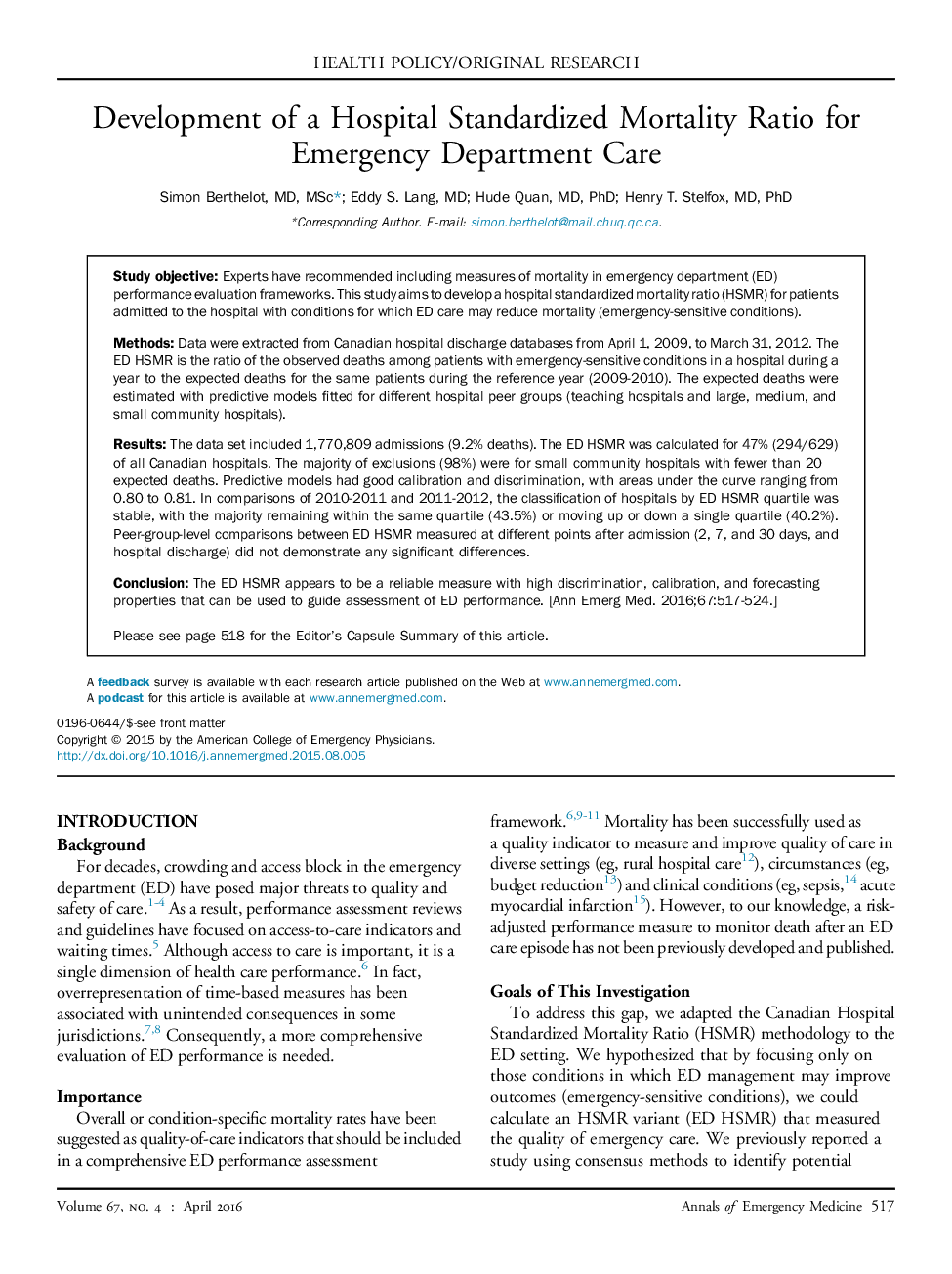| Article ID | Journal | Published Year | Pages | File Type |
|---|---|---|---|---|
| 6080826 | Annals of Emergency Medicine | 2016 | 34 Pages |
Study objectiveExperts have recommended including measures of mortality in emergency department (ED) performance evaluation frameworks. This study aims to develop a hospital standardized mortality ratio (HSMR) for patients admitted to the hospital with conditions for which ED care may reduce mortality (emergency-sensitive conditions).MethodsData were extracted from Canadian hospital discharge databases from April 1, 2009, to March 31, 2012. The ED HSMR is the ratio of the observed deaths among patients with emergency-sensitive conditions in a hospital during a year to the expected deaths for the same patients during the reference year (2009-2010). The expected deaths were estimated with predictive models fitted for different hospital peer groups (teaching hospitals and large, medium, and small community hospitals).ResultsThe data set included 1,770,809 admissions (9.2% deaths). The ED HSMR was calculated for 47% (294/629) of all Canadian hospitals. The majority of exclusions (98%) were for small community hospitals with fewer than 20 expected deaths. Predictive models had good calibration and discrimination, with areas under the curve ranging from 0.80 to 0.81. In comparisons of 2010-2011 and 2011-2012, the classification of hospitals by ED HSMR quartile was stable, with the majority remaining within the same quartile (43.5%) or moving up or down a single quartile (40.2%). Peer-group-level comparisons between ED HSMR measured at different points after admission (2, 7, and 30 days, and hospital discharge) did not demonstrate any significant differences.ConclusionThe ED HSMR appears to be a reliable measure with high discrimination, calibration, and forecasting properties that can be used to guide assessment of ED performance.
